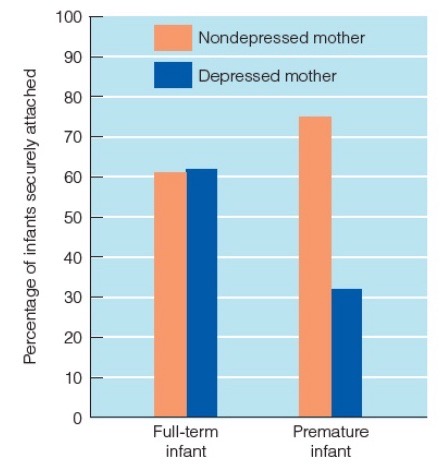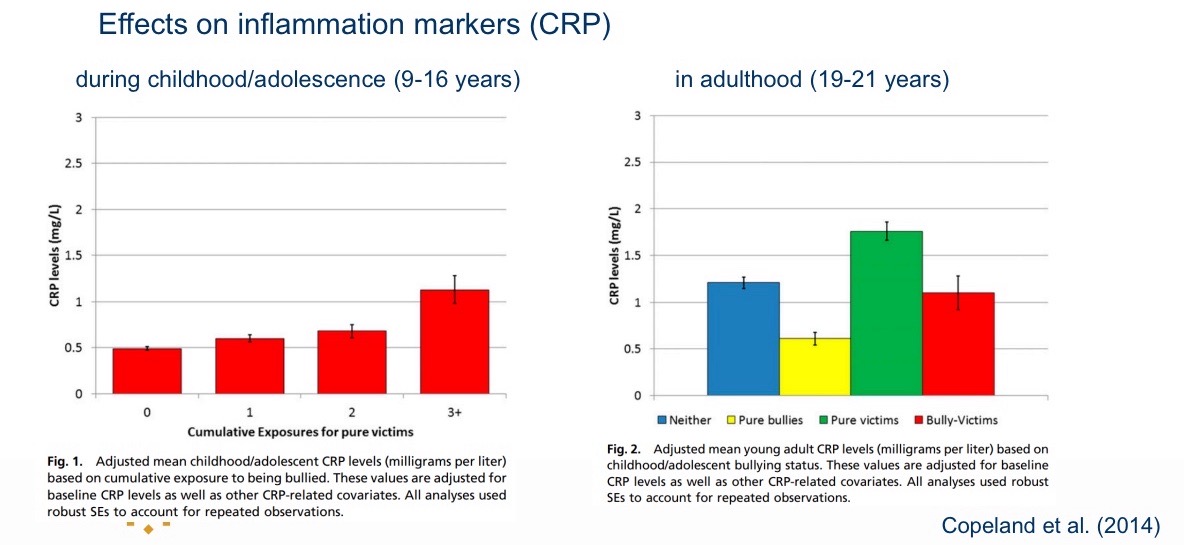developmental psychology ch9
1/41
There's no tags or description
Looks like no tags are added yet.
Name | Mastery | Learn | Test | Matching | Spaced |
|---|
No study sessions yet.
42 Terms
Infancy: Trust vs distrust -
Primary task/conflict of babies (0-1.5 years): strong dependency on parents.
If caregiver is reliable and responsible → trust
If parenting is insecure, unreliable → distrust (insecure attachment)
Attachment:
Strong emotional bond between caregiver (parent) and child (or any two people).
Attachment can influence through life
Attachment: Nature
According to ethnologists (Lorenz), forerunner of today’s evolutionary psychologists, attachment is a biologically programmed response taking place early after birth.
but also: influence of stimulus from environment
Attachment: Nurture
According to behaviourists, attachment is caused by association with food (maternal reinforcement stimulus).
Watson: Baby must be treated like a small adult to turn out independent, keep distance.
Behaviourism still influences our everyday thinking about upbringing.
Attachment: Harlow experiment
How do babies get attached?
What is more important: Food or love?
(Ethically) difficult to test in humans!
Experiment with newborn monkeys:
A. Wire mother with milk
B. Soft, warm artificial mother without milk
→ Which mother did the monkeys prefer?
Short-term effects:
Most monkeys stayed with the warm mother, but would take a drink from the metal mother when necessary
When a scary stimulus was placed in the cage:
The monkey would go to the warm mother for comfort
Shows the monkey got attached to the warm mother
Proximity-seeking behavior occurs with survival threat
Long-term effects:
Monkeys who grew up “motherless” showed deviant social behavior in later life:
No sexual behavior
Fear of peers
No caring behaviour for offspring
Conclusion:
→ Warm relationship of infant with parents (secure base) is crucial for development!
Bowlby: Attachment theory
“Maternal love in childhood is as important for mental health as vitamins for physical health”
Nature → Inborn tendency to attach to primary caretakers, critical period for attachment response.
But: Proximity-seeking behaviour when feeling threatened at any age.
Nurture → Primary caretakers influence the child’s development.
Sensitive period for attachment is when baby is most vulnerable - starts being mobile. Fear bias kicks in then.
Attachment figure provides:
Secure base from which to explore world
Safe haven to return to for comfort
Evolutionary explanation: Attachment is good for survival
Relationship with primary caretaker forms basis for future relationships.
Development of attention:
Phase | Description |
Undiscriminating social responsiveness (0-months) | - No obvious attachment yet, but infant smiles back at others, this is called the social smile. |
Discriminating social responsiveness (4-6 months) | - Shows a slight preference for the primary caregiver as the cortex develops |
Active proximity seeking or true attachment (7-8 months to 3 years) | - Clear preference for primary caregiver |

Development of attachment - detail
Undiscriminating social responsiveness (0–3 months)
• no obvious attachment, but smiles back: ‘social smile’
Discriminating social responsiveness (4–6 months)
• slight preference for primary caregiver (developing cortex)
Active proximity seeking or true attachment (7–8 months to 3 years)
• Clear preference for primary caregiver, social reference, separation and stranger anxiety (cognitive abilities to miss caregiver)
• Anxiety peaks at 1–2 years of age
Goal-corrected partnership (from 3 years)
• Take into account parents’ goals and adjust behaviour
Attachment styles: test
The strange situation - Mary Ainsworth: How does a child respond?
Mother and child play together
Stranger enters room (picture)
Mother leaves room (alone w stranger)
Mother returns, stranger leaves
Mother leaves (child alone)
Stranger returns
Mother returns
Responses in the strange situation when parent returns:
Secure attachment - Child responds happily to parent or can be easily comforted by parent. Parent = safe base.
Insecure attachment - Child doesn’t respond happily and can’t be comforted. Parent is not a safe base.
Attachment experiences affects internal working models = cognitive representations of others/self - important for processing social information and behaviour in relationships.
Types of insecure attachment:
Avoidant: shows no separation anxiety and little emotion upon return.
Resistant/Ambivalent: Much anxiety and stress after separation, ambivalent emotions when parent returns, inconsolable.
Disorganised/dissociated: No consistent way of coping - confused or contradictory behaviour.
Attachment vs working models:
Safely attached children = positive internal working models = “I am loveable”
Insecurely attached children = Negative internal working model = “I am unloveable”
Criticism attachment styles/strange situation:
Categories of attachment may be overly simplified.
Children with disorganised attachment style mixed group.
20 minutes not sufficient.
Cultural differences may impact results.
How does a child get attached?
Sensitive parenting
Intergenerational transfer (grandparents on parents) - modeling + genes
Match between child’d needs and environmental support

How does attachment develop over time?
Stable environment - change in environment can change attachment style.
What are the effects of secure attachment?
Securely attached kids are more likely to grow up to be socially competent adults, higher self-esteem and friendship number.
Is infant attachment universal?
Attachment to primary caregiver is universal - worldwide similar % securely attached, but some cultural differences.
In Japan infants more likely to be distressed
In Germany more insecure-avoidant

Early life deprivation and emotional/physical neglect - attachment. (Romania)
Secure attachment still possible, but timing and level of neglect matter.
Adopted prior/at 20 months: 60% secure
Adopted at 24 months: 30% secure
Attachment and daycare:
No negative effect, but quality of daycare matters - too much kids and no stability/routine is bad.
Play behaviour:
= the main activity in early childhood → important influence on cognitive skills.
Two major changes in play before infancy and age 5:
More social.
More imaginative - beginning pretending (emerges in later infancy), collaborative pretend play around age 4, after age 5 more serious.
Type of play:
Solitary: play alone
Parallel: play next to each other no cooperation, little communication
Associative: Side by side, separate goal, but communication and interactions
Cooperative play: Joining forces, common goal
Function of play:
Allows children to develop and practice many skills:
Motor: Physical and locomotor play supports neural maturation and refinement of motor skills.
Cognitive: Pretend play enhances performance on tests of cognitive development, executive function, and creativity.
Language: Pretend play directly develops language skills.
Social: Social pretend play builds children’s understanding of others’ perspectives, social skills, and popularity.
Emotional: Play promotes healthy emotional development by providing opportunities to act out or express bothersome feelings, regulate emotions, and resolve emotional conflicts.
Friendships:
Essence of friendship is similarity - in age, gender, but also values and interests.
Developmental theories: A best friend..
…fulfils the need for self-validation and intimacy that emerges around 9, training ground for romance → Protecting factor of having a friend, friends also teach emotions.
Popularity:
Popularity becomes an absorbing question in later elementary school - social status = primary goal.
Entering concrete operations makes kids sensitive to social comparisons.
Related to:
Attractiveness, intelligence, social competence, emotion regulation abilities
Sociometric status:
Peer nominations - liking/disliking, bullied/helped etc.
1) Continuous outcome measure - social preference score = acceptance minus rejection
2) Categorical Outcome Measure: Social Status Types
Based on peer nominations measuring social preference (liked most vs. liked least) and social impact (total nominations received):
• Popular (high positive/low negative) - 11%
• Rejected (low positive/high negative) - 13%• Neglected (low positive/low negative) - 9%
• Controversial (high positive/high negative) - 7%
• Average (medium on both dimensions) - 60%
Social exclusion and peer rejection: reasons
Interpersonal: individual differences - ex. attractiveness, social skills
Intergroup: bias or prejudice regarding group membership
Consequences can reinforce social exclusion:
lower levels of well being/self esteem, academic issues, less prosocial behaviour, internalising = depression, externalising = aggression
Bullying:
Repeatedly inflicting harm through words or actions on a targeted peer.
Includes many forms: physical aggression + more indirect or covert forms like cyberbullying.
26% of 11-15 year olds are bullied/bully 2/3 times a month - different rate by culture (10% Scandinavian and 40% Baltic)
Not limited to childhood
Main motivation to bully: gaining status
Effects 1 bullying:

Effects 2 bullying:

Interventions for bullying:
Social skill training for victims/kids at risk for bullying → Mixed results or no positive outcomes for 50% studies, not efficient if bullying based on something else.
Antibullying programs in schools: combat bullying and encourage students to intervene.
Olweus Bullying Prevention Program: focuses on broader community - successful in reduction and fostering inclusive school environment.
Social relationships in adolescence:
Peers surpass parents as sources of intimacy and support → Change of internal working models for attachments from parents to friends/partner.
Supportive parents provide security and encouragement to become independent and autonomous → Balance of exploration and attachment.
Secure attachment during adolescence:
Sense of identity, high self-esteem, high social skills, high emotional adjustment, less behavioural problems, attachment to friends and later parents
Friendships with peer who are similar in:
physical characteristics, behaviour, psychological qualities → Increasingly cross-sex friendships, connecting in groups.
Three stages of dating in adolescence:
Entry to romantic attractions and affiliations (11 to 13 yrs)
Triggered by puberty → interest in romance, dominates conversations
Developing a crush on someone, often sharing a crush, dating in group setting .
Exploring romantic relationships (14 to 16 yrs) = both casual and group dating.
Consolidating dyadic romantic bonds (17 to 19 yrs)
More serious romantic relationships - closely resemble adult ones, more stable and enduring.
Types of relations by school age:
At entry to middle school: Unisex cliques
Late middle school/early high school: Crowds
High school: Mixed-sex cliques
Emerging adulthood: Romantic partners
How easy is it to influence adolescents?
Standard hypothesis: Power of influence increases during early adolescence, decreases in late adulthood (curvilinear)
Steinberg and Monahan hypothesis: Power of influence decreases linearly during adolescence
How easy is it to influence adolescents? Questionnaire study:
Tested by using resistance to peer influence scale:
Result (in 3 large samples): Power of influence decreases linearly between age 14 and 18. (→ resistance increases)
How easy is it to influence adolescents? Experiment
Simulated driving task in the lab
Group: adolescence, young adults and older adults
Condition: alone vs with peer
Results: Adolescence make riskier decisions in front of their peers, not so with adults.
→ Peer influence decreases
Research suggests that being with peers has enormous effect on young teens, e.g., binge drinking.
Attachment and autism spectrum disorder:
One meta-analysis (Rutgers et al., 2004): based on four samples → 53% of children with ASD securely attached → children with autism significantly less securely attached to their parents than comparison children (moderate effect size)
Effect moderated by mental development: no difference to controls for ASD children with higher mental development and less severe ASD symptoms
More recent systematic review (Teague et al., 2017): based on seven samples → 47% of children with ASD securely attached→ Children with ASD can form secure attachments, security of attachment does not differ from TD controls
Insecure attachments more likely if:
ASD + intellectual disability/developmental delay
Greater severity of autism symptoms
Poorer parent-child interaction
Fewer pro-social responses to caregivers (difficulties in social-communication experienced by children with ASD pose a challenge for caregivers to tune-in to their child's subjective state, and for children to understand and predict caregiver's behaviour)
Neurobiological studies: comparable to children without ASD, significant increases in cortisol during stressful separation episodes and increases in oxytocin during interactions with caregivers in children with ASD
→ despite lower hormone levels at baseline, children experience similar hormonal changes linked to separation and reunion